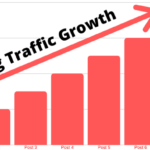Writing an SEO-friendly article involves creating content that both readers and search engines will appreciate. Here’s a step-by-step guide to help you write articles optimized for SEO:
1. Keyword Research:
- Identify relevant keywords: Start by brainstorming topics related to your niche or industry. Then, use keyword research tools (like Google Keyword Planner, Ahrefs, or Semrush) to find relevant keywords with decent search volume and low competition.
- Analyze search intent: Understand what users are looking for when they search for those keywords. Are they seeking information, looking to buy something, or trying to find a specific website? Tailor your content to match their intent.
- Choose primary and secondary keywords: Select a primary keyword that you want to focus on, and then identify a few secondary keywords that are related to your main topic.
2. On-Page Optimization:
- Optimize your title: Use your primary keyword in your title tag, but make sure it’s still compelling and click-worthy. Keep it concise (under 60 characters) and avoid keyword stuffing.
- Use keywords in headings and subheadings: Incorporate your primary and secondary keywords naturally in your headings (H1, H2, H3, etc.) to structure your content and signal its relevance to search engines.
- Optimize your URL: Use a short, descriptive URL that includes your primary keyword.
- Write high-quality content: Create informative, engaging, and well-written content that satisfies the user’s search intent. Focus on providing value to your readers and avoid thin or duplicate content.
- Use keywords naturally in your content: Sprinkle your primary and secondary keywords throughout your article, but don’t overdo it. Focus on writing naturally and avoid keyword stuffing, which can hurt your rankings.
- Optimize images: Use descriptive alt text for your images, including relevant keywords where appropriate. Compress your images to improve page load speed.
- Internal and external linking: Link to other relevant pages within your website (internal linking) and to authoritative sources outside your website (external linking). This helps search engines understand the context of your content and improves user experience.
- Meta description: Write a compelling meta description (under 160 characters) that summarizes your article and encourages users to click through from the search results.
3. Content Optimization:
- Structure your content: Use headings, subheadings, bullet points, and images to break up your content and make it easier to read.
- Focus on readability: Write in a clear and concise style, using short sentences and paragraphs. Avoid jargon and complex language.
- Provide valuable information: Offer unique insights, data, or perspectives that will engage your readers and make your article stand out.
- Answer questions: Address the questions that users are likely to have about your topic.
- Use visuals: Include images, videos, or infographics to illustrate your points and make your content more engaging.
4. Technical SEO:
- Page speed: Ensure your website loads quickly. Use tools like Google PageSpeed Insights to identify and fix any issues.
- Mobile-friendliness: Make sure your website is responsive and works well on all devices.
- Crawlability and indexability: Ensure search engines can easily crawl and index your website. Use a robots.txt file and sitemap to help them navigate your site.
- HTTPS: Make sure your website is secure with an SSL certificate (HTTPS).
5. Promotion and Link Building:
- Share your article on social media: Promote your content on social media platforms to reach a wider audience.
- Build backlinks: Earn high-quality backlinks from other reputable websites to improve your website’s authority and search engine rankings.
- Engage with your audience: Respond to comments and questions on your article to foster engagement and build a community around your content.
6. Monitor and Analyze:
- Track your rankings: Use tools like Google Search Console to monitor your keyword rankings and identify any areas for improvement.
- Analyze your traffic: Use Google Analytics to track your website traffic and understand how users are interacting with your content.
- Make adjustments: Based on your data, make adjustments to your content and SEO strategy to improve your results over time.
Remember:
- Write for humans first: While it’s important to optimize your content for search engines, always prioritize writing for your readers. Create high-quality, engaging content that provides value to them.
- SEO is an ongoing process: SEO is not a one-time task. It requires continuous effort and adaptation to stay ahead of the curve.
- Stay updated: Keep up with the latest SEO trends and best practices to ensure your content remains optimized.
By following these tips, you can write articles that are both informative and optimized for search engines, helping you attract more organic traffic to your website.






